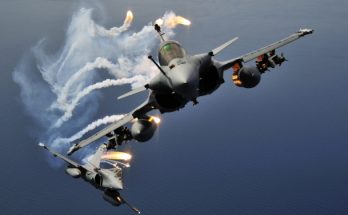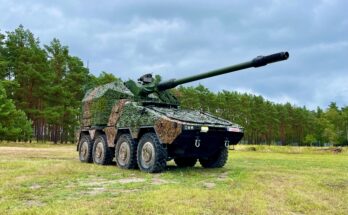With the threat of a gap in production of its MQ-4C Triton high-altitude long-endurance (HALE) drone, Northrop Grumman is offering a reduced-rate, accelerated-production alternative to Australia.
Due to a U.S. Navy decision to defer acquisition of the MQ-4C Triton out to 2023 at the earliest, Northrop Grumman faces a two-year pause in production.
The U.S. Navy has already ordered 14 of its 65-68 required Tritons, which are slated to replace its Lockheed-produced EP-3E Aries II signals reconnaissance aircraft.
The MQ-4C Triton is prohibitively expensive – more per unit cost than even an F-35 Lightning II combat aircraft. But a bigger issue is equipping the latest production batch drones with multi-intelligence capabilities – particularly the signals intelligence (SIGINT) capability needed for the Navy to backfill for EP-3E Aries II fleet retirement.
Rather than having to retrofit newly produced drones to the desired IFC 4 (Integrated Functional Capability 4) software standard, the Navy has opted to bypass its next two low-rate initial production (LRIP) lot orders of two and three Tritons apiece (these would have fallen under LRIP 6 and LRIP 7).
As a means of filling in its emerging gap, Northrop is offering to bring forward production of five of the six Tritons required by the Royal Australian Air Force (RAAF) under the current LRIP 5 batch.
Despite concerns about rising costs and a capability gap following a US 'production pause' on the MQ-4C Triton program, Northrop Grumman has moved quickly to respond to Australia's anxiety about the program. https://t.co/QK5GZrlSsM
— Defence Connect (@DefenceConnect) March 5, 2020
The Northrop pitch is that by moving forward with an LRIP 5 contract, Australia stands to save substantially on a per-unit cost basis and salvage its targeted in-service date rather than see the RAAF face a deferred capability timeline.
Australia has already ordered one of the six MQ-4Cs under its Project AIR 7000 Phase 1B requirement for an unmanned platform to perform maritime surveillance missions. This first unit falls under LRIP 5, a three-unit production batch that also includes two units ordered by the U.S. Navy.
Under its 2016 Defense White Paper, seven MQ-4C Tritons were to be acquired. But in June 2018 the Australian government announced its commitment to just six, with a decision on the seventh deferred.
The first Triton – for which AUD1.4 billion ($925 million) has been allocated to procure the aircraft and ground control systems – is scheduled to enter service in mid-2023. The government announced purchase of a second platform at a cost of around AUD350 million ($231 million) on March 27, 2019.
But the larger Australian goal of bringing the RAAF’s entire Triton fleet to Full Operational Capability (FOC) status by late 2025 is now in jeopardy.
As a solution, Northrop Grumman proposes to add five MQ-4Cs for Australia to the three-unit LRIP 5 batch (involving one RAAF and two U.S. Navy units). These would all be of the IFC 4 standard required by the RAAF should Australia reach a decision by the end of June.

Dan Darling is Forecast International’s director of military and defense markets. In this role, Dan oversees a team of analysts tasked with covering everything from budgeting to weapons systems to defense electronics and military aerospace. Additionally, for over 17 years Dan has, at various times, authored the International Military Markets reports for Europe, Eurasia, the Middle East and the Asia-Pacific region.
Dan's work has been cited in Defense News, Real Clear Defense, Asian Military Review, Al Jazeera, and Financial Express, among others, and he has also contributed commentary to The Diplomat, The National Interest and World Politics Review. He has been quoted in Arabian Business, the Financial Times, Flight International, The New York Times, Bloomberg and National Defense Magazine.
In addition, Dan has made guest appearances on the online radio show Midrats and on The Media Line, as well as The Red Line Podcast, plus media appearances on France 24 and World Is One News (WION).




